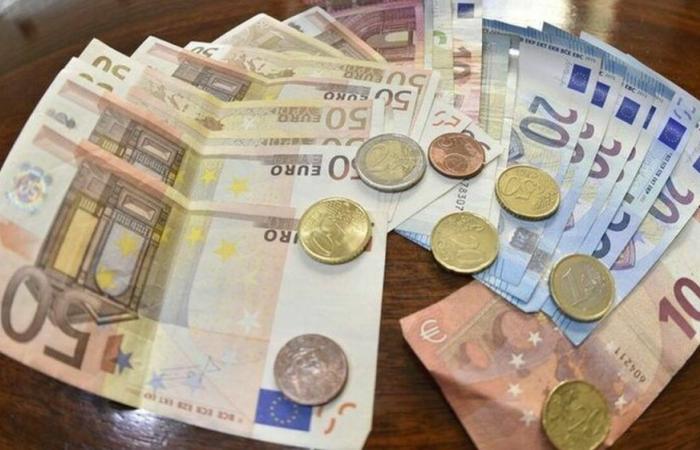Laundering dirty money remains one of the main activities of criminal organizations. And it is no coincidence that suspicious financial operations that come mainly from banks, and that are often the cover for money laundering maneuvers, are concentrated in the most productive regions of the country, and therefore in the North, or in the areas of the South most permeated by the presence of the mafia.
He reports
The annual report prepared by the UIF, the financial information unit of the Bank of Italy, provides an overview of the country. A balance sheet that closes the circle on the past year and presents the statistics relating to actions to combat money laundering and terrorist financing. Puglia, ninth in Italy, is among the regions where in 2023 suspicious activity reports (SOS) decreased the most compared to the previous year: 21.7% less (only Molise did better, recording -32%) represented by the figure of 6,356 “alerts” with an incidence of 4.2% of the total. In 2022, in fact, the Apulian counter had reached 8,115 SOS with an incidence of 5.2% of the total. The decline, however, remains only an isolated exception in the last five years: suspicious reports have always increased in recent years, so much so that in Puglia the positive figure for 2023 still records a surge that translates into +11.4% compared to 2019. Moreover, the figure from five years ago already represented a leap forward: +10.6% compared to 2018. In 2023, the reports of suspicious transactions (SOS) received by the Bank of Italy’s anti-money laundering unit were 150,418 throughout Italy (-3.2% compared to 2022). But despite the reduction in flows, the complexity of the reports continues to grow. The territorial distribution of the reports confirms a strong correlation with the economic and social dimension of the various regions. The absolute record is held by Lombardy (27,462 reports in 2023 with an incidence of 18.3% of the total), followed by Lazio (15,872 and 10.6%) and Campania (15,903 and 10.5%). Puglia is third in the South after Campania (second nationally) and Sicily (eighth). On the next step, in tenth, is Calabria. Between the podium and the South, in terms of number of financial transactions at risk, there is the blockade of the Northern regions, the most productive in the country, in addition to Lombardy which leads the ranking. In order, from fourth to seventh place, there are Veneto, Emilia Romagna, Piedmont and Tuscany. The UIF represents the intelligence of the Bank of Italy, a network that also involves the Guardia di Finanza, the National Anti-Mafia and Anti-Terrorism Directorate and the Dia. The mission of the task force is to receive, acquire and analyze information relating to borderline financial flows, that is, information that suggests hypotheses of money laundering and terrorist financing. Information that reaches its destination via SOS, the reports that come from banks, post offices, electronic money institutions and the Post Office. This is the first line. For the rest, those who activate the alarm bell switches are also financial intermediaries and operators, insurance companies, professionals (especially notaries), auditors, gaming service providers and, obviously, public administrations (which are obliged to communicate maneuvers deemed suspicious).
Under the magnifying glass are anomalous operations involving the use of cash (deposits, credits, withdrawals and debits), check operations, gold operations, purchase and sale of securities, disbursement or repayment of loans, issuance of bank transfers. The anomalous operations are then X-rayed by the UIF, the Guardia di Finanza and the Anti-Mafia.
2% of GDP
Money laundering in Italy is worth at least 1.5-2% of GDP: the “laundering” of dirty money amounts to an average of 40 billion euros. The estimate is for the period 2018-2022, but even with the most up-to-date trend the value does not seem to vary. “A significant dimension, which motivates us to increase our commitment to prevention activities,” commented Enzo Serata, the director of the Financial Information Unit of Bankitalia, during the presentation of the 2024 report. “In the fiscal area – is the alarm raised by the report – the flow of reports connected to the policies to support the economy and in particular with the PNRR is significant”. Then there is the growing use of “FinTech tools aimed at hindering the traceability of financial flows; computer fraud is increasingly widespread”. The UIF inspections, doubled compared to the previous year, also involved “innovative and high-risk sectors, such as crowdfunding, the purchase and sale of tax credits via digital platforms and the use of virtual IBAN services”. While “in the purchase of vouchers for the distribution of electronic money, the recharging of gaming accounts and the provision of services in virtual activities, risks related to the failure to identify the relevant buyers have emerged”. Another alarm also comes from the monitoring of foreign transfers which “has led to the identification of potentially illicit flows towards Russia triangulated with third countries”. In the context of the strategic analysis, in-depth studies continued on the use of “filter” companies, which facilitate the so-called VAT carousel frauds. Indicators of irregularities in the use of public funds have been developed and risk measures have been defined for tenders, which have highlighted a notable heterogeneity of the corruption risk between territories and by size of the contracting authority.
© ALL RIGHTS RESERVED
Read the full article on
Daily Newspaper of Puglia



